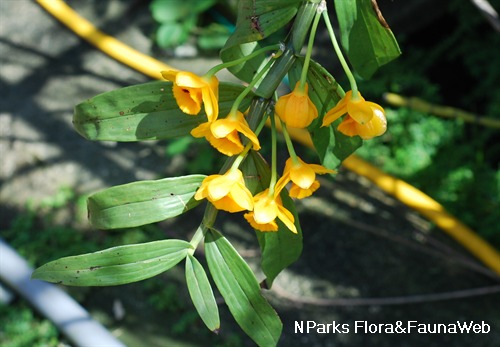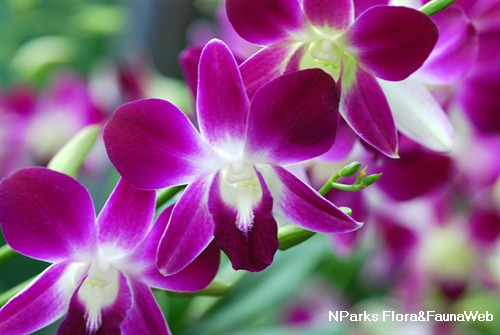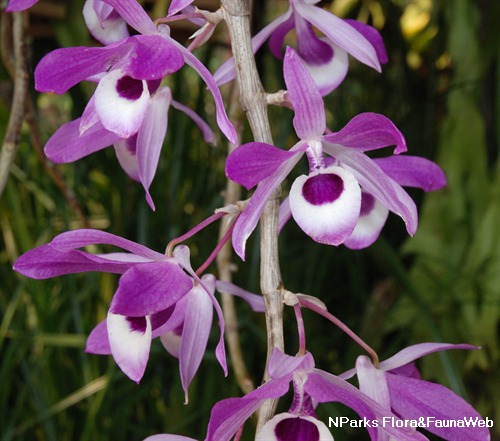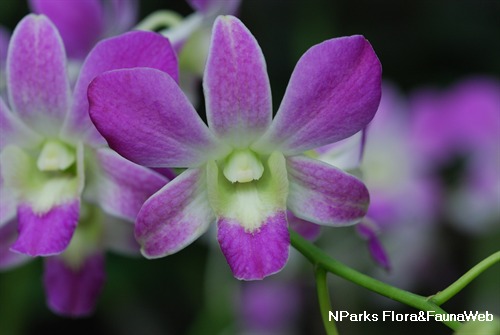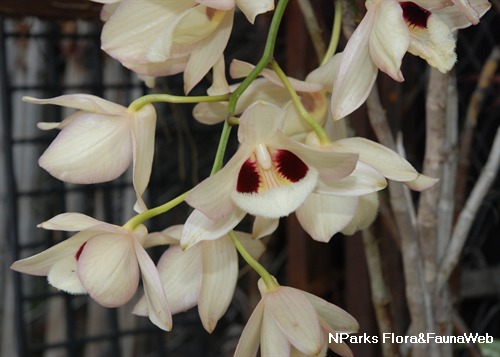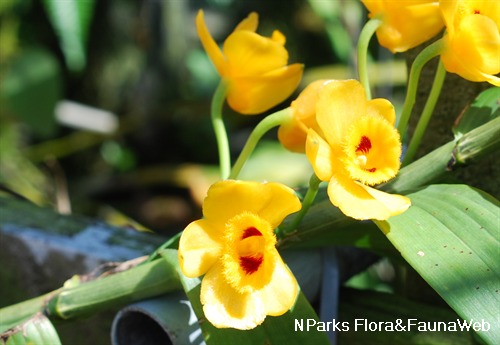
Back
Dendrobium chrysanthum Wall. ex Lindl.
| Family Name: | Orchidaceae |
| Synonyms: | Dendrobium chrysanthum Rchb. f. var. anophthalmum, Dendrobium chrysanthum Rchb. f. var. microphthalmum |
| Common Name: | 束花石斛 |
Name
Classifications and Characteristics
| Plant Division | Angiosperms (Flowering Seed Plants) (Monocotyledon) |
|---|---|
| Plant Growth Form | Epiphyte |
| Lifespan (in Singapore) | Perennial |
| Mode of Nutrition | Autotrophic |
Biogeography
| Native Distribution | India (Assam), Nepal, Tibet, East and West Himalayas, Hainan, South-Central and Southeast China, Myanmar, Laos, Vietnam, Thailand |
|---|---|
| Native Habitat | Terrestrial |
| Local Conservation Status | Non-native (Horticultural / Cultivated Only) |
Description and Ethnobotany
| Growth Form | An epiphytic orchid, it has a pendulous growth habit. |
|---|---|
| Foliage | The leaves are oblong-lanceolate in shape. |
| Stems | The stems are pendulous and cylindrical in shape, the upper part of the stem sometimes curved upwards. |
| Flowers | The flowers are borne on short inflorescences on the upper part of the stem and are opposed to the leaves. The flowers have yellow sepals and petals which are slightly concave and are obovate in shape. The flower lip is yellow woth a brown patch on both sides of the inner lip surface. |
| Habitat | It is found growing on tree trunks or on wet rocks in forests and valleys at altitudes of 700 to 2500m. |
Landscaping Features
| Desirable Plant Features | Ornamental Flowers |
|---|---|
| Landscape Uses | Small Gardens, Skyrise / Balcony |
Plant Care and Propagation
| Light Preference | Semi-Shade |
|---|---|
| Water Preference | Moderate Water |
| Propagation Method | Seed, Division |
Floral (Angiosperm)
| Flower & Plant Sexuality | Bisexual Flowers |
| Flower Colour(s) | Brown, Yellow / Golden |
|---|---|
| Flower Texture(s) | Waxy |
| Flower Grouping | Cluster / Inflorescence |
| Flower Location | Axillary |
| Flower Symmetry | Bilateral |
Image Repository
Others
| Master ID | 31732 |
|---|---|
| Species ID | 6131 |
| Flora Disclaimer | The information in this website has been compiled from reliable sources, such as reference works on medicinal plants. It is not a substitute for medical advice or treatment and NParks does not purport to provide any medical advice. Readers should always consult his/her physician before using or consuming a plant for medicinal purposes. |

